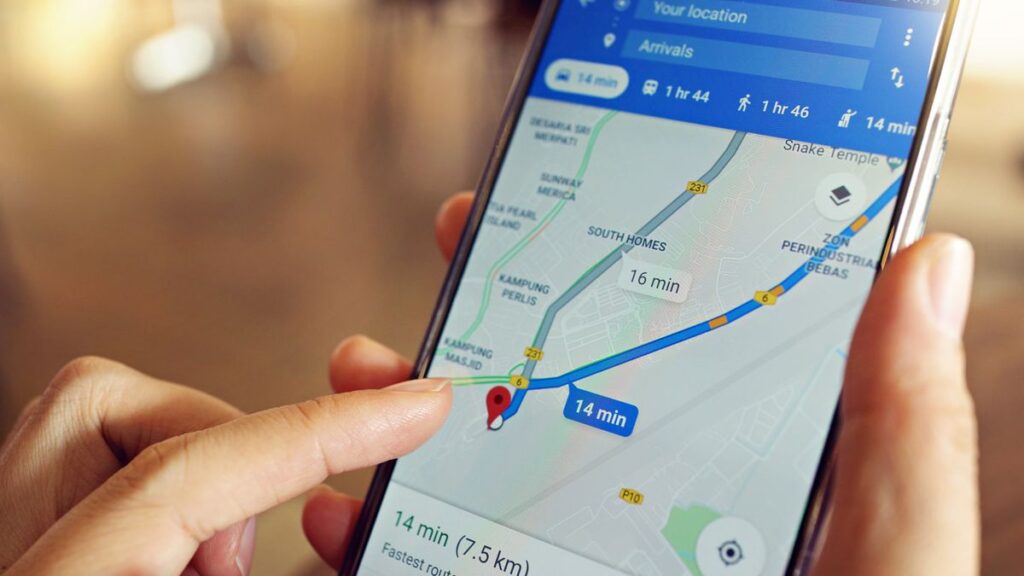In a significant advancement for travelers, Google Maps adds indoor navigation for airports, revolutionizing the way we navigate through bustling terminals. This innovative feature aims to alleviate the stress of finding gates, lounges, and amenities within large airport complexes. With the integration of indoor mapping, passengers can now enjoy a seamless travel experience, ensuring they reach their destinations without the hassle of getting lost in the maze of terminals.
As you delve deeper into this article, you will discover the various functionalities that indoor navigation offers, including real-time updates on gate changes and the ability to locate essential services such as restrooms, restaurants, and shops. We will explore how this feature not only enhances convenience but also improves overall airport efficiency, making it easier for travelers to plan their journeys. Additionally, we will discuss the technology behind indoor mapping and how it is set to evolve in the future.
Stay with us as we uncover the benefits of Google Maps’ indoor navigation for airports, and learn how this tool can transform your travel experience. Whether you are a frequent flyer or an occasional traveler, understanding these advancements will empower you to navigate airports with confidence and ease. Read on to find out how you can make the most of this exciting new feature!
Google Maps has recently introduced indoor navigation features specifically designed for airports, enhancing the travel experience for millions of passengers. This innovative addition allows users to navigate complex airport layouts with ease, ensuring they reach their gates, lounges, and other facilities without unnecessary stress. In this article, we will explore various aspects of this new feature.
Understanding Indoor Navigation Technology
Indoor navigation technology utilizes a combination of GPS, Wi-Fi, Bluetooth, and other sensors to provide accurate location tracking within enclosed spaces. Unlike outdoor navigation, where GPS signals are strong and reliable, indoor environments present challenges due to signal interference. Google Maps addresses these challenges by employing advanced algorithms and mapping techniques to create detailed indoor maps of airports.
This technology not only helps users find their way but also provides real-time updates on their location. By integrating indoor navigation into Google Maps, travelers can receive turn-by-turn directions, making it easier to locate amenities such as restrooms, restaurants, and shops within the airport.
Benefits for Travelers
The introduction of indoor navigation in airports offers numerous benefits for travelers. Firstly, it significantly reduces the time spent searching for gates and services, allowing passengers to focus on their travel experience. This is particularly beneficial in large airports where distances between terminals can be substantial.
Moreover, indoor navigation enhances accessibility for individuals with disabilities. By providing clear directions and information about accessible routes, Google Maps ensures that all travelers can navigate the airport comfortably. This inclusivity is a crucial aspect of modern travel, making airports more welcoming for everyone.
How to Use Indoor Navigation on Google Maps
Using indoor navigation on Google Maps is straightforward. Travelers simply need to open the app, search for their airport, and select the indoor map option. Once inside the airport, users can view their current location and receive step-by-step directions to their desired destination.
Additionally, Google Maps allows users to save their favorite locations within the airport, such as lounges or shops, making it easier to find them later. This feature is particularly useful for frequent travelers who often visit the same airports and want to streamline their experience.
Integration with Other Airport Services
Google Maps’ indoor navigation feature is designed to integrate seamlessly with other airport services. For instance, users can access flight information, check-in services, and even order food from restaurants within the app. This integration creates a comprehensive travel experience, allowing passengers to manage all aspects of their journey from a single platform.
Furthermore, airports can leverage this technology to provide personalized services, such as notifications about gate changes or delays. By enhancing communication between the airport and travelers, Google Maps helps ensure a smoother travel experience.
Future Developments in Indoor Navigation
The introduction of indoor navigation for airports is just the beginning. As technology continues to evolve, we can expect further enhancements to this feature. Future developments may include augmented reality (AR) capabilities, allowing travelers to visualize their route through their smartphone camera.
Additionally, airports may implement more interactive elements, such as digital kiosks that provide real-time information and assistance. These advancements will not only improve navigation but also enrich the overall airport experience for travelers.
Conclusion: A Game Changer for Air Travel
In conclusion, Google Maps’ addition of indoor navigation for airports represents a significant advancement in travel technology. By simplifying the navigation process, enhancing accessibility, and integrating with other airport services, this feature is set to transform the way travelers experience airports.
As more airports adopt this technology, we can anticipate a future where navigating through busy terminals becomes a hassle-free experience, allowing passengers to enjoy their journey from start to finish.
| Feature | Description |
|---|---|
| Introduction | Google Maps has introduced indoor navigation features specifically designed for airports, enhancing the travel experience for passengers. |
| Functionality | The indoor navigation feature provides real-time directions within the airport, helping travelers find gates, restrooms, and other amenities. |
| Interactive Maps | Users can access interactive maps that display the layout of the airport, including shops, restaurants, and lounges. |
| Search Capability | Travelers can search for specific locations within the airport, making it easier to navigate large terminals. |
| Accessibility | The feature is designed to be user-friendly, catering to all passengers, including those with disabilities. |
| Real-Time Updates | Google Maps provides real-time updates on gate changes and flight information, ensuring travelers stay informed. |
| Availability | This feature is available in select airports worldwide, with plans for expansion to more locations in the future. |
| Conclusion | Indoor navigation in airports via Google Maps significantly improves the travel experience by providing essential information and guidance to passengers. |

